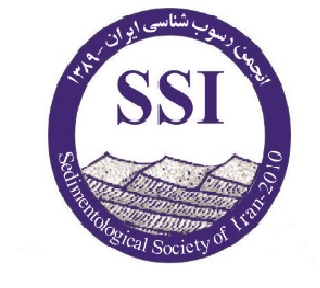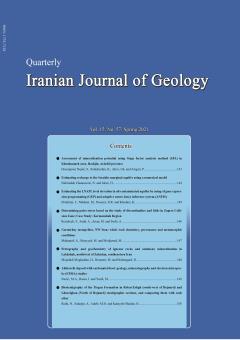Assessment of mineralization potential using Stage factor analysis method (SFA) in Khoshnameh area, Hashjin, Ardabil province
Subject Areas :Samira Hoseinpore Nejati 1 , Kamal Siahcheshm 2 * , seyyed ghafour alavi 3 , pouya Zargari 4
1 -
2 -
3 -
4 -
Keywords: Geochemical anomalies, Multivariate methods, Stage factor analysis, Khoshnameh, Ardabil,
Abstract :
The Khoshnameh altered area is located about 20 km south of Khalkhal (Ardebil province) and lies in the Hashjin metallogenic district. The formation of extensive serictic, argillic, silicic, chloritic and iron oxides alterations in the Chenar, Mahmudabad and east of Khoshnameh, as well as the copper-lead-zinc mineralization events (e.g. Senjedeh, Shalvali and Ommabad) appears to be intimately affiliated to the fluids derived from upper Oligocene granodiorite intrusions which were emplaced within the Eocene trachy-basalt, andesite and pyroclastic rocks. The key point of this research is to investigate the preference of the Stage Factor Analysis (SFA) to evaluate the geochemical dispersion of mineralization and the visualization of real anomalies throughout the Khoshnameh area. Since the concentration of rock forming elements that are not related to mineralization has a negative effect on the factor privilege of elements, then the number of factors to increase the severity of anomalies must be reduce. For this purpose, initially nine factors were calculated based on the chemical composition of the samples. At this stage, non-representative elements and elements that did not participate in any of the factors were identified and removed from the data set and factor analysis was re-applied. After applying three stages of analysis on the data, the most effective predictive and important factors in terms of mineralization were deduced. Consequently, the number of factors decreased to 5. Therefore, using this method increases the prediction rate and success of the exploration, compared to the typical factor analysis method. Thus, the probable anomalies of Ba, Sn, Pb and Mo mineralization from the first factor and As, Cd and Sb mineralization from the fourth factor are predicted and introduced.
آقانباتی، س. ع.، 1383. زمینشناسی ایران. سازمان زمینشناسی و اکتشافات معدنی کشور، تهران، 586.
حسنی پاک، ع، ا.،1387. اصول اکتشافات ژئوشیمیایی. چاپ ششم، انتشارات دانشگاه تهران، 601.
زرناب اکتشاف، 1385. گزارش اکتشاف عناصر پلیمتال (طلا و سایر عناصر) در محدوده روستای خوشنامه هشتجین. 125.
قربانی، م.، 1387. زمینشناسی اقتصادي کانسارها و نشانههای معدنی ایران. انتشارات آرین زمین، 639.
نبوي، م، ح.، 1355. دیباچهای بر زمینشناسی ايران. انتشارات سازمان زمینشناسی کشور، 109.
Alfassi, Z.B., Boger, Z. and Statistical, Y., 2005. Treatment of analytical data: outliers (Chapter 6). CRC Press, 512.
Borovec, Z., 1996. Evaluation of the concentrations of trace elements in stream sediments by factor and cluster analysis and the sequential extraction procedure, Science of the Total Environment, 177, 1, 237-250.
Carranza, E.J., 2008. Geochemical anomaly and mineral prospectivity mapping in GIS, handbook of Exploration and Environmental Geochemistry, 11. Elsevier, Amsterdam, 122.
Reimann C., Filzmoser P. and Garrett R.G., 2005. Background and threshold: critical comparison of methods of determination, Science of the Total Environment, 346, 1-16.
Tabachnick, B.G. and Fidell, L.S., 2001. Using Multivariate Statistics, Allyn and Bacon, 392.
Tripathi, V.S., 1979. Factor analysis in geochemical exploration. J Geochem Explor, 11, 263–275.
Yousefi, M., Kamkar-Rouhani, A. and Carranza, E. J. M., 2012. Geochemical mineralization probability index (GMPI): a new approach to generate enhanced stream sediment geochemical evidential map for increasing probability of success in mineral potential mapping, Journal of Geochemical Exploration, 115, 24-35.

